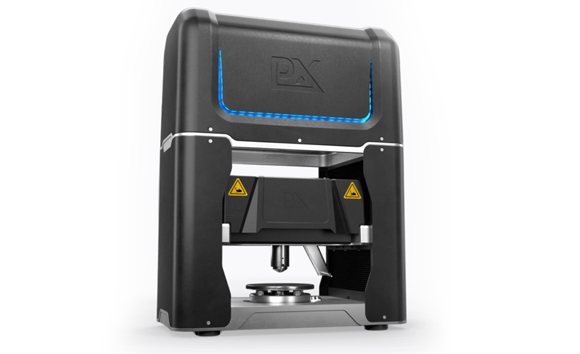University of Oxford team collaborate with Plastometrex to support research of superalloys made using Additive Manufacturing
April 5, 2022

Materials testing solutions provider Plastometrex, headquartered in Cambridge, UK, has collaborated with researchers at The University of Oxford to support their work testing alloy-by-design methodology. The University of Oxford team invested in an Indentation Plastometer device from Plastometrex to aid their research.
Professor Roger Reed, who has experience in the engineering and science of high-temperature alloys, with a particularly strong focus on nickel-base superalloys, leads a research group at The University of Oxford that develops new superalloy systems that can be made using Additive Manufacturing. Printable superalloys systems would reportedly enable new parts to be designed with greater geometric freedom, prototyped faster, and produced with minimal material wastage.
However, changing the manufacturing method of a material comes with significant research challenges. Legacy superalloys have been designed to be made via traditional casting approaches, which are fundamentally different to Additive Manufacturing. The rapid heating and cooling processes that occur during Additive Manufacturing can strongly impact the materials microstructure and its resultant mechanical properties, leading to parts with potentially compromised structural performance.
In order to tackle this challenge, Professor Reed and his team have utilised an alloy-by-design methodology. This uses computational tools to screen different elemental compositions, exploring the relationship between their chemistry and material properties. The approach allows researchers to navigate millions of possible alloy compositions, enabling them to select the most promising candidates for production and physical testing. Importantly, alloy-by-design empowers researchers to design whole new alloy systems, especially for production via Additive Manufacturing. The result is novel superalloy compositions that retain the excellent mechanical performance of the legacy cast grades even when made using modern Additive Manufacturing techniques.
A key part of this alloy design process is the ability to validate these numerical models quickly with high throughput physical testing. To do this, Professor Reed and his team utilised the Indentation Plastometer device from Plastometrex. The bench-top system is capable of measuring accurate material strength (in the form of stress-strain curves) from an automated three-minute indentation test. This technology reduces both the testing times and materials required for testing by over 90%, allowing the research team to design and prototype alloy grades far faster than other research groups working in the same field.
Professor Reed stated, “The Indentation Plastometer enables us to reduce our physical testing times from days to just a few minutes. This has had a massive positive impact on our alloy design research, enabling us to navigate, select and validate new materials faster than ever before.”
Plastometrex and the research team at The University of Oxford have strong collaborative ties, recently co-authoring a publication in Advanced Engineering Materials. The work explores how the Indentation Plastometer can be used to characterise the properties of small samples of anisotropic superalloys. In this work, it was shown that the Plastometer can give a semi-quantitive measure of anisotropy (an effect where materials exhibit different properties in different directions).
Bill Clyne Chief Scientific Officer at Plastometrex, commented, “We are delighted to be working with the team at Oxford, who are world leaders in the metallurgy of Additive Manufacturing. We look forward to continue to collaborate with Roger and his team as we push the frontiers of mechanical materials testing.”
















